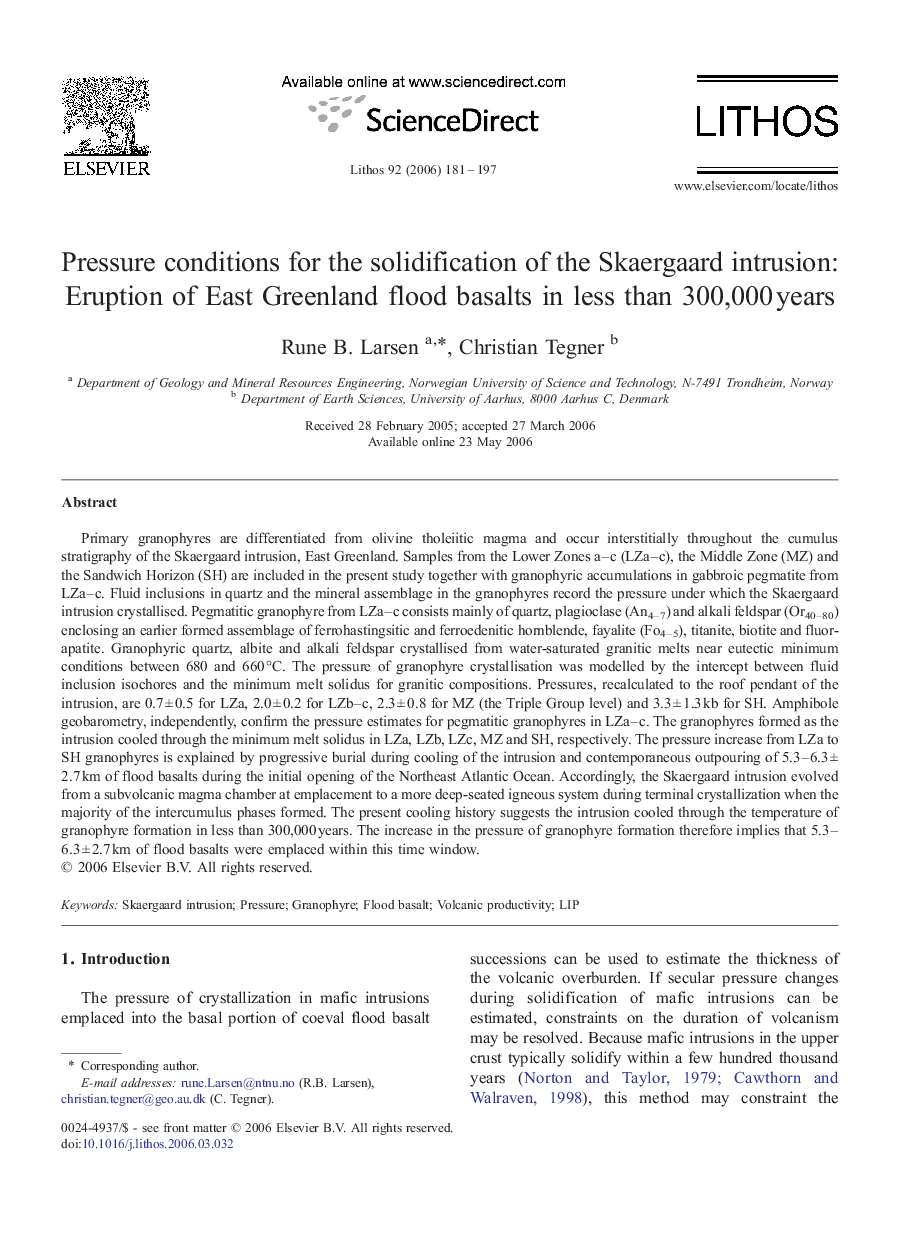| کد مقاله | کد نشریه | سال انتشار | مقاله انگلیسی | نسخه تمام متن |
|---|---|---|---|---|
| 4718019 | 1638775 | 2006 | 17 صفحه PDF | دانلود رایگان |

Primary granophyres are differentiated from olivine tholeiitic magma and occur interstitially throughout the cumulus stratigraphy of the Skaergaard intrusion, East Greenland. Samples from the Lower Zones a–c (LZa–c), the Middle Zone (MZ) and the Sandwich Horizon (SH) are included in the present study together with granophyric accumulations in gabbroic pegmatite from LZa–c. Fluid inclusions in quartz and the mineral assemblage in the granophyres record the pressure under which the Skaergaard intrusion crystallised. Pegmatitic granophyre from LZa–c consists mainly of quartz, plagioclase (An4–7) and alkali feldspar (Or40–80) enclosing an earlier formed assemblage of ferrohastingsitic and ferroedenitic hornblende, fayalite (Fo4–5), titanite, biotite and fluor-apatite. Granophyric quartz, albite and alkali feldspar crystallised from water-saturated granitic melts near eutectic minimum conditions between 680 and 660 °C. The pressure of granophyre crystallisation was modelled by the intercept between fluid inclusion isochores and the minimum melt solidus for granitic compositions. Pressures, recalculated to the roof pendant of the intrusion, are 0.7 ± 0.5 for LZa, 2.0 ± 0.2 for LZb–c, 2.3 ± 0.8 for MZ (the Triple Group level) and 3.3 ± 1.3 kb for SH. Amphibole geobarometry, independently, confirm the pressure estimates for pegmatitic granophyres in LZa–c. The granophyres formed as the intrusion cooled through the minimum melt solidus in LZa, LZb, LZc, MZ and SH, respectively. The pressure increase from LZa to SH granophyres is explained by progressive burial during cooling of the intrusion and contemporaneous outpouring of 5.3–6.3 ± 2.7 km of flood basalts during the initial opening of the Northeast Atlantic Ocean. Accordingly, the Skaergaard intrusion evolved from a subvolcanic magma chamber at emplacement to a more deep-seated igneous system during terminal crystallization when the majority of the intercumulus phases formed. The present cooling history suggests the intrusion cooled through the temperature of granophyre formation in less than 300,000 years. The increase in the pressure of granophyre formation therefore implies that 5.3–6.3 ± 2.7 km of flood basalts were emplaced within this time window.
Journal: Lithos - Volume 92, Issues 1–2, November 2006, Pages 181–197